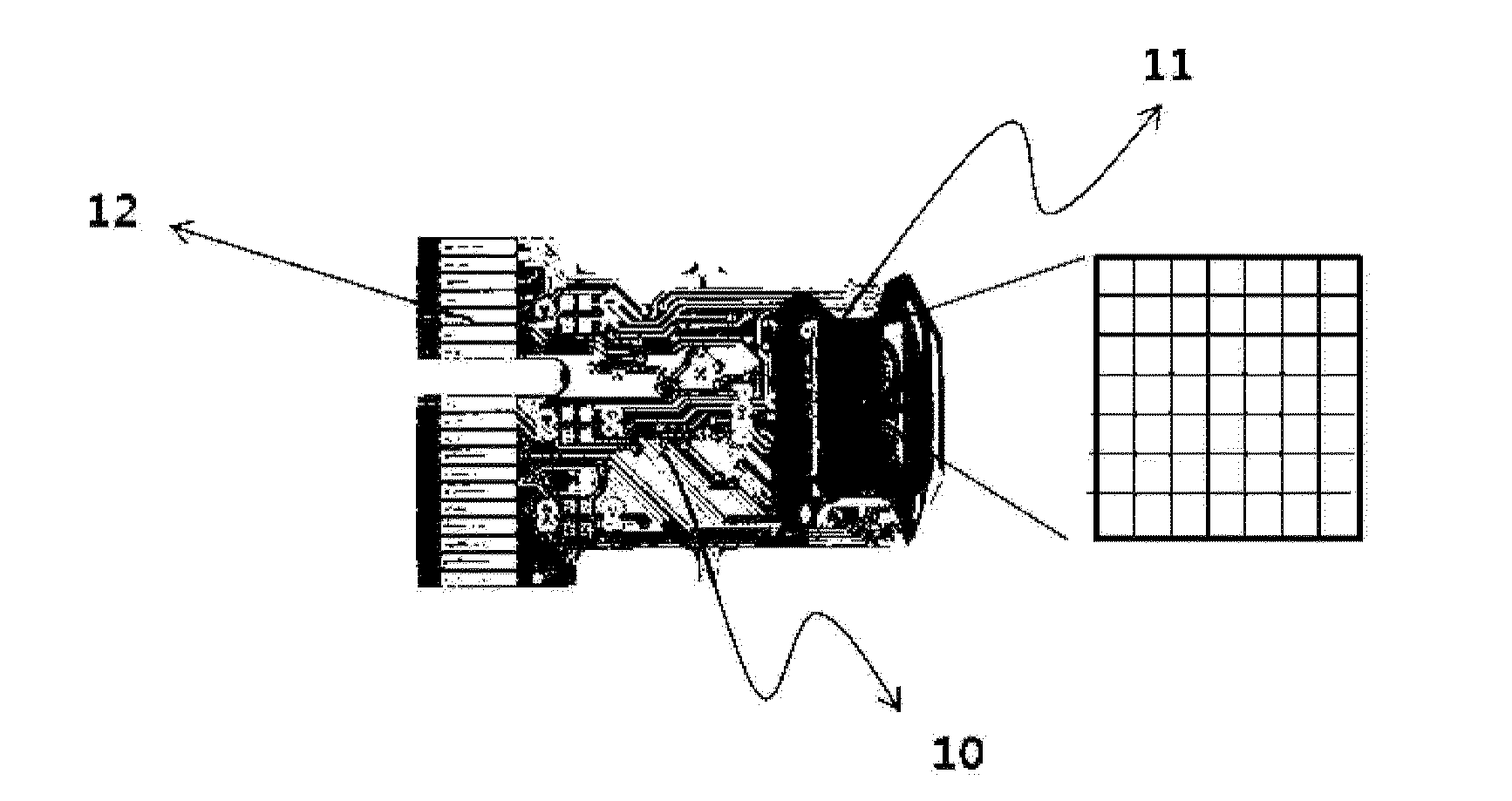High sensitivity biosensor using pixel analysis of CMOS image sensor
a biosensor and image sensor technology, applied in the field of cmos image sensors, can solve the problems of inability to analyze a biomarker having a concentration of pg/ml unit or less in the human body, almost impossible to analyze cytokine by using biochip technologies, and most existing analysis equipment analyzing biochips, such as fluorescent scanners, can achieve the effects of increasing measurement sensitivity, low cost, and small siz
- Summary
- Abstract
- Description
- Claims
- Application Information
AI Technical Summary
Benefits of technology
Problems solved by technology
Method used
Image
Examples
example 1
Measurement of Streptavidin-Horseradish Peroxidase (STA-HRP)
[0037]46000 pixels having each width of about 4 μm and each length of about 4 μm, were formed on the surface of the measuring unit 11 of the CMOS image sensor of FIG. 1. A solution (concentration of 0, 1, 100, 10000 fg / ml) obtained by dissolving streptavidin-horseradish peroxidase (STA-HRP) manufactured by Calbiochem, USA in 10 mM PB buffer (pH 7.0) was reacted onto the surface of the measuring unit modified by a biotin group at room temperature for 30 minutes, to fix enzymes onto the surface by an adsorption method. Then, the surface was washed with 10 mM PB buffer, distilled water, and 0.1M carbonate buffer (pH 9.0) in sequence.
[0038]Next, the measuring unit was treated with 2 mM luminol dissolved in 0.1M carbonate buffer (pH 9.0) and 2 mM hydrogen peroxide solution.
[0039]The process of forming the chemiluminescent signal according to the treatment of the luminol and the hydrogen peroxide solution was shown in FIG. 2.
[004...
example 2
Measurement of IL-5
[0044]The measuring unit 11 of the CMOS image sensor of FIG. 1 was ultrasonic-washed in 0.1N NaOH solution for 15 minutes, then washed with ethanol three times, and APTMS ((3-Aminopropyl)trimetoxysilane) having 1% concentration dissolved in ethanol was reacted for about 2 hours. Then, the reaction product was washed with ethanol about two times, then ultrasonic washed in ethanol for five minutes again, and dried with high purity nitrogen gas. In addition, in order to prepare a surface reacting with an antibody, 2 vol % of glutaraldehyde dissolved in 10 mM PB buffer was reacted for about 4 hours to finally modify the surface of the measuring unit with an aldehyde group.
[0045]Then, a 0.1 mg / ml IL-5 capture antibody was reacted onto the modified surface for about 1 hour, followed by reaction with 1% BSA solution for about 2 hours in order to remove non-specific reaction. In addition, IL-5 antigen dissolved in PBS buffer and biotinylated 5 μg / ml IL-5 detection antibod...
PUM
| Property | Measurement | Unit |
|---|---|---|
| length | aaaaa | aaaaa |
| width | aaaaa | aaaaa |
| concentration | aaaaa | aaaaa |
Abstract
Description
Claims
Application Information
 Login to View More
Login to View More - R&D
- Intellectual Property
- Life Sciences
- Materials
- Tech Scout
- Unparalleled Data Quality
- Higher Quality Content
- 60% Fewer Hallucinations
Browse by: Latest US Patents, China's latest patents, Technical Efficacy Thesaurus, Application Domain, Technology Topic, Popular Technical Reports.
© 2025 PatSnap. All rights reserved.Legal|Privacy policy|Modern Slavery Act Transparency Statement|Sitemap|About US| Contact US: help@patsnap.com



